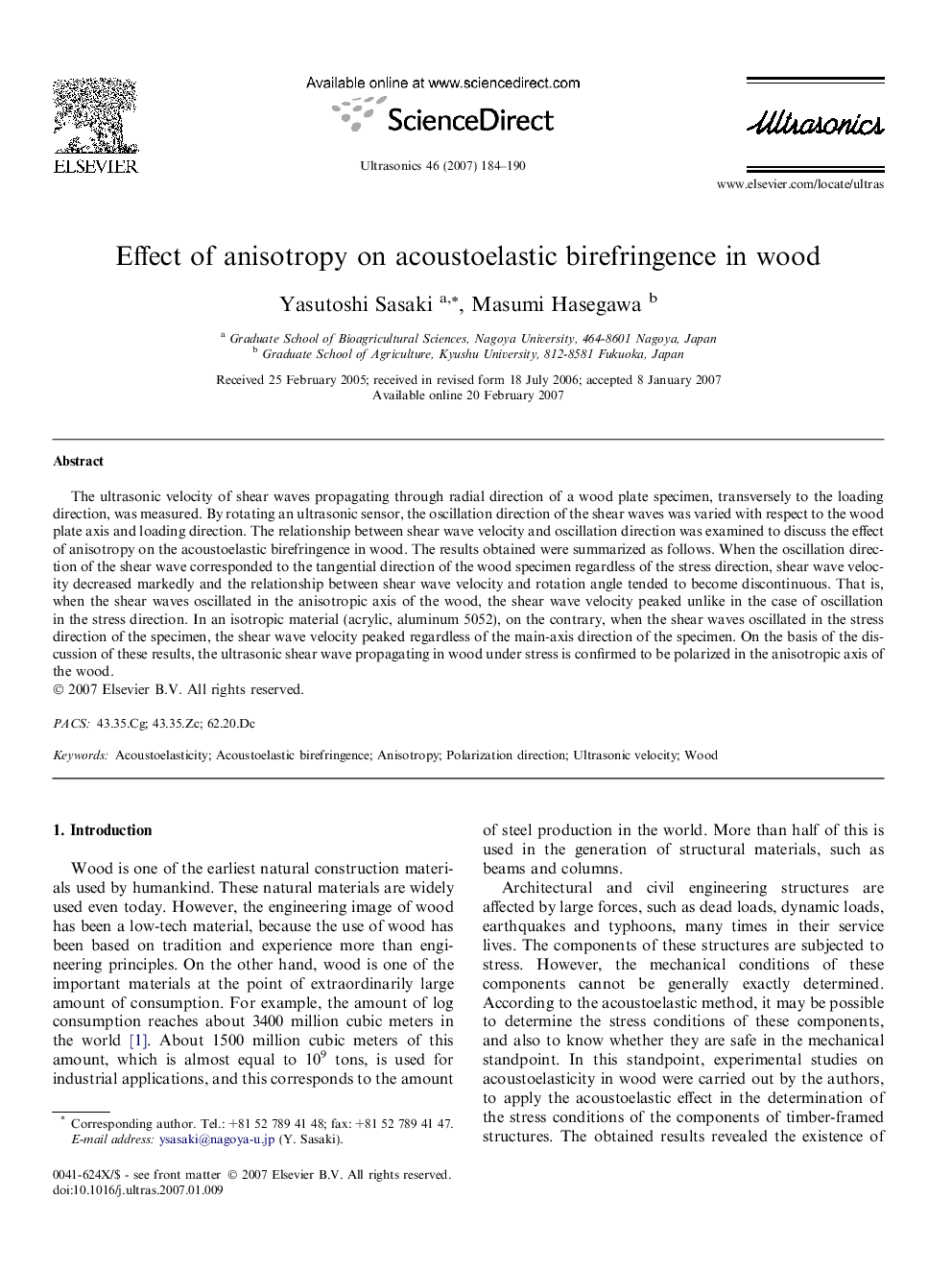| Article ID | Journal | Published Year | Pages | File Type |
|---|---|---|---|---|
| 1760070 | Ultrasonics | 2007 | 7 Pages |
The ultrasonic velocity of shear waves propagating through radial direction of a wood plate specimen, transversely to the loading direction, was measured. By rotating an ultrasonic sensor, the oscillation direction of the shear waves was varied with respect to the wood plate axis and loading direction. The relationship between shear wave velocity and oscillation direction was examined to discuss the effect of anisotropy on the acoustoelastic birefringence in wood. The results obtained were summarized as follows. When the oscillation direction of the shear wave corresponded to the tangential direction of the wood specimen regardless of the stress direction, shear wave velocity decreased markedly and the relationship between shear wave velocity and rotation angle tended to become discontinuous. That is, when the shear waves oscillated in the anisotropic axis of the wood, the shear wave velocity peaked unlike in the case of oscillation in the stress direction. In an isotropic material (acrylic, aluminum 5052), on the contrary, when the shear waves oscillated in the stress direction of the specimen, the shear wave velocity peaked regardless of the main-axis direction of the specimen. On the basis of the discussion of these results, the ultrasonic shear wave propagating in wood under stress is confirmed to be polarized in the anisotropic axis of the wood.
